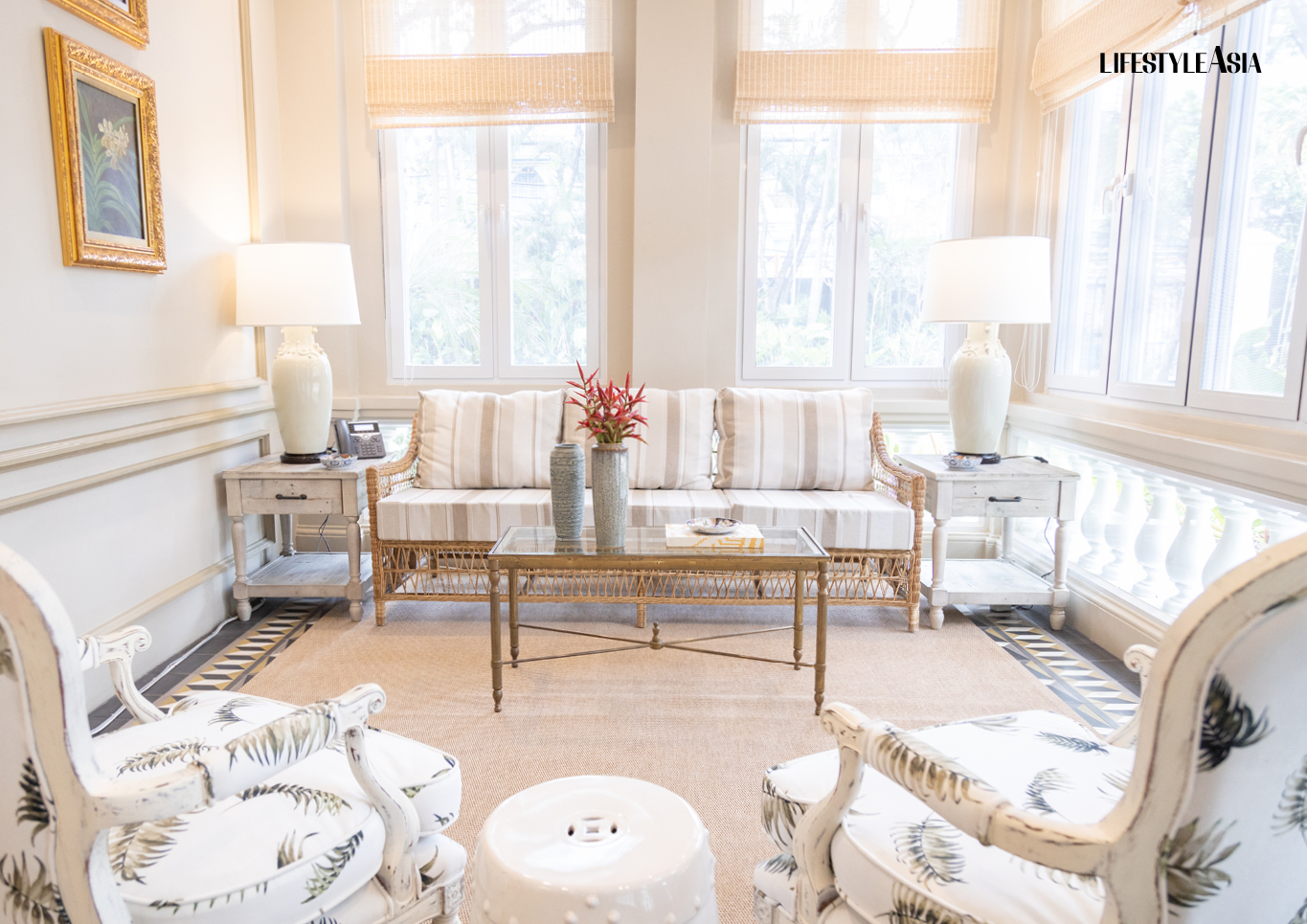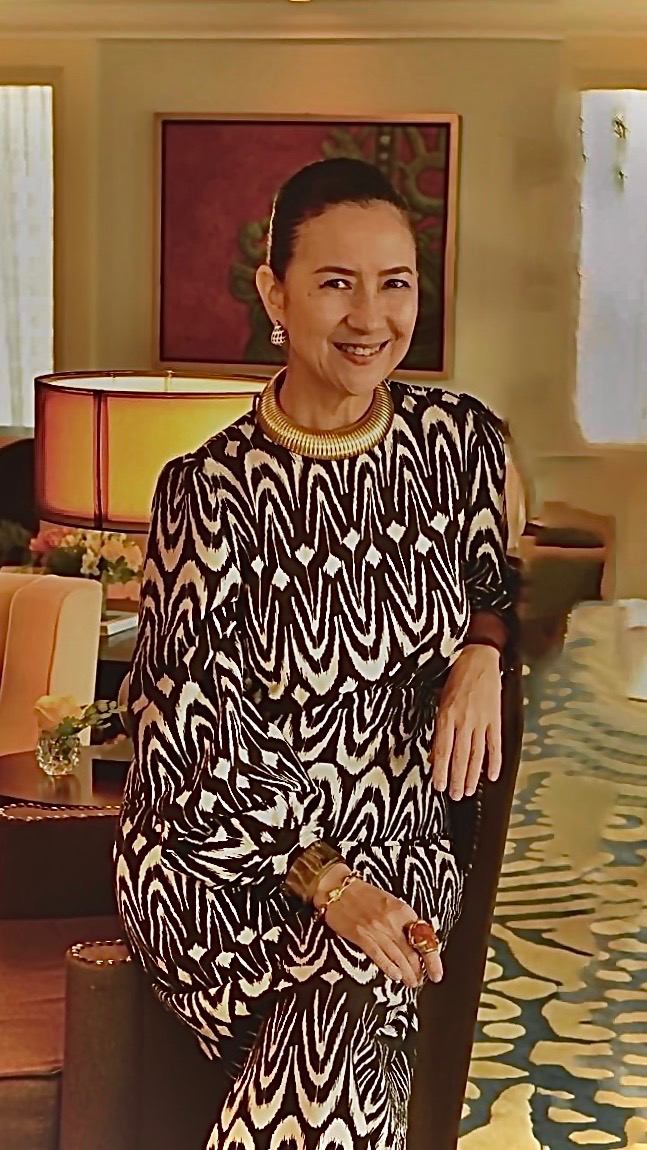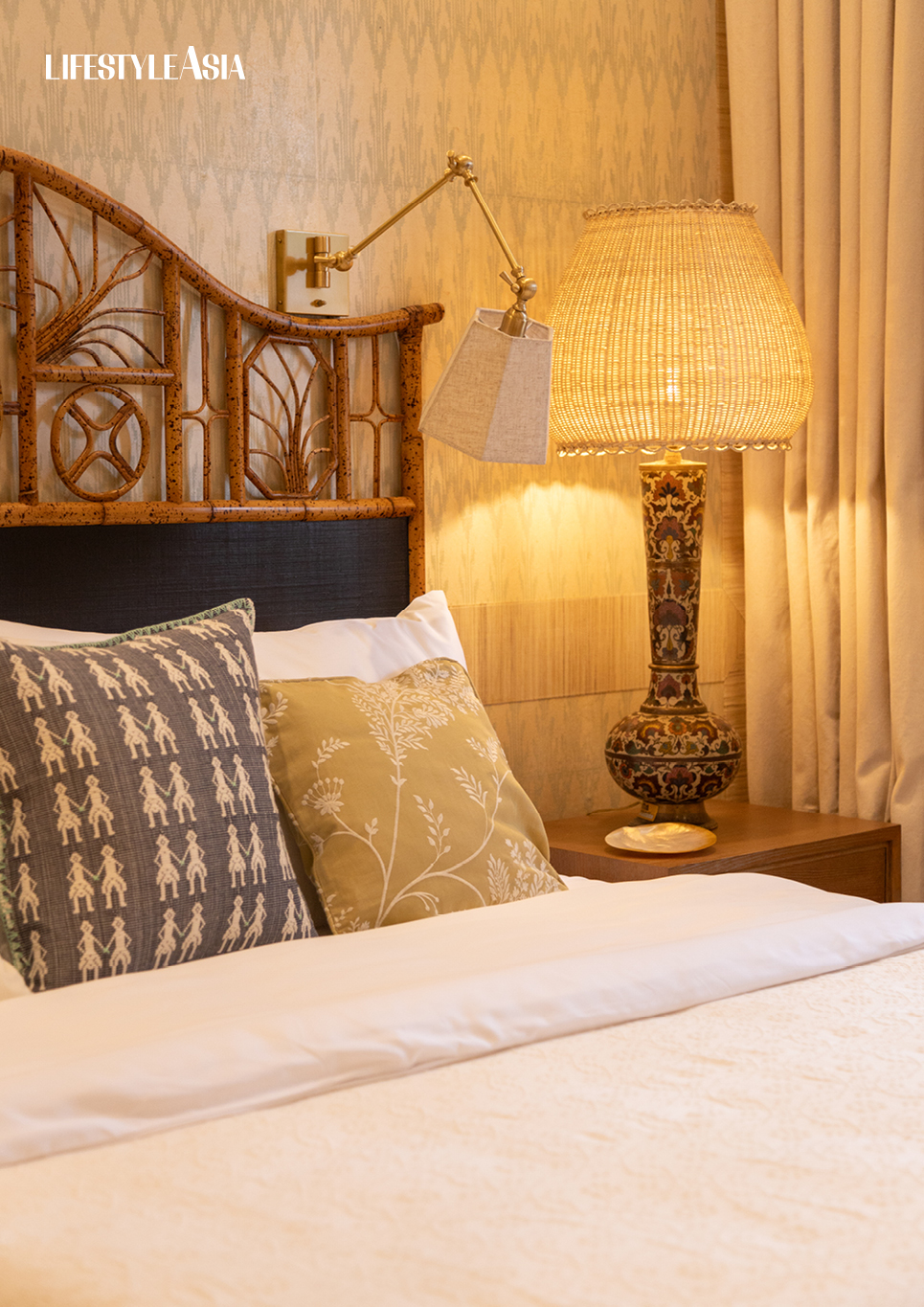Adesign, The Collective, and Cecil Ravelas, discuss the process and inspirations behind their stunning designs for the newly-restored Laperal Mansion.
Enhancing and transforming a historic landmark as immense as the Laperal Mansion is certainly a job for more than one person. In this case, it required the creative collaboration and insights of some of the country’s best designers, who all made significant contributions in designing various spaces within the mansion.




With its old-world charm and touches of tropical sensibilities, the newly-restored Laperal Mansion now serves as the Presidential Guest House. Inside its walls are sophisticated rooms that pay homage to the country’s historical and political figures, taking inspiration from them through their charming and innovative designs.

READ ALSO: Embodying Filipino Hospitality: A Newly-Restored Laperal Mansion Serves As Presidential Guest House
Lifestyle Asia had the pleasure of speaking to several designers who worked on some of the rooms within the mansion, exploring their process and inspirations for their respective projects.
Cecil Ravelas
Interior designer Cecil Ravelas was the mind behind the mansion’s Manuel Roxas Guest Room, an airy space with regal blue, silver, and wood accents that lend both a classic and contemporary feel. It’s emblematic of Ravelas’ creative process, as the designer works with “the genius loci or the spirit of the place,” as she puts it. As such, she let the mansion’s rich and storied history serve as a guide for the room’s various elements.

Old and New Sensibilities
“Furthermore, I think aside from the history of the place, the narrative of the person it is named after should also be taken into account . President Manuel Roxas was the last president of the Commonwealth of the Philippines from May 28, 1946, to July 4, 1946,” she explains in our interview. “Consequently ,the American commonwealth period had many typologies. We focused on mid-century furniture pieces that were emerging then and are still popular today.”
Ravelas used local materials, yet maintained the clean and modern lines that are characteristic of the period style. Another element that harkens back to that point in history is the particular shade of blue that she used as an accent color.

“The color is also seen as a sign of stability and reliability which is in character of President Manuel Roxas,” she expounds. “Shades of gray were used in the room to give a sense of balance and calmness. The color symbolizes diplomacy, impartiality, and intelligence.”
Meanwhile, the walls feature a stucco finish that calls back to the mansion’s European influences, yet still has a contemporary feel to it that positions the room in today’s time and place.

“The collection of prints in the room are representations of his [Roxas’] heritage and identity. He fought for autonomy and independence from the American government,” she adds. “We furnished the room with minimal details to keep it light and spacious, but selected each piece to establish a more modern classic Filipino theme.”
Project Highlights
As for her favorite part of the room’s design, Ravelas points to its materiality. “We used traditional woven materials for the headboard and the wallpaper but it was rendered in cleaner patterns and lines to make it more contemporary,” she elaborates. “The framed prints are original and a century old which gives the space a certain authenticity.”

Working together with other designers and architects was also a highlight of the entire process. “We were all assigned to our specific rooms, like classmates in a design class assigned to work on a case project with a tight deadline,” she shares. “We were like kids checking and comparing each other’s work, encouraging each other to ensure that we all finish our project at the same time. Typical in a class setting there are the honor students and the last minute crammers. But, in the end, we all graduated together.”
Transformative Design
As with many creative endeavors, the process wasn’t always smooth sailing. Ravelas encountered her fair share of challenges, including the race towards deadlines. “I am comparing it to the Amazing Race, professional designer master class edition,” she says. “While it is part of our regular job to work under all sorts of constraints, this project is truly one for the books.”


She cites the instance when furniture did not come out how she envisioned, just a few days before the handover date. “So I had to call on my usual suppliers and contractors to save the day,” she explains. “Some of the items that are usually ordered months ahead and require 90 to 120 days to produce, I had to harass my A-team to reproduce in just 4 days.” Yet despite the hurdles, Ravelas cherishes the experiences and will not soon forget it.
“The Laperal Mansion is historic and I am grateful to be part of its narrative,” she shares. “I am also grateful to be able to share my work in the service of our country. At this point, I want to be able to continue creating and producing works that are not just beautiful, but also transformative and life changing. I think designing is a way of life. We design to improve our environment and shape a better world.”
Adesign: Tessa Alindogan, Artur Tselishchev, Anton Barretto
Interior designers Tessa Alindogan, Artur Tselishchev, and Anton Barretto—known collectively as the brilliant team behind Adesign—helped make the mansion’s stately Gloria Macapagal-Arroyo Guest Room a reality.

Arroyo’s roots lie in both Lubao, Pampanga and Iligan City, Iligan—the latter of which holds the nickname City of Waterfalls. As such, the designers wanted to create a clear, visual connection between the former president and her hometowns, as well as her love for diving, local tourism, and the environment.

The room makes these elements clear through furniture from Pampanga that showcase its rich craftsmanship, as well as predominantly blue hues reminiscent of water. “Blue is the former president’s favorite color and it symbolizes water, our archipelagic nation, and the serenity and life itself, as the blue ocean and sky nurture and house all of nature,” the team explains. “Complementary tones in the accent wallpaper convey the abundant flora and fauna.”
They add: “We believe our room represents the narrative, character, and advocacies of President Gloria Macapagal-Arroyo; and we hope her era finds representation and authentic expression in this room.”
Elements of Pride
Every member of the team has their own particular favorite when it comes to aspects of the room they designed. For Alindogan, it’s the intricate wallpaper. “We searched for a pattern that would give a good visual on the tropical landscape here in the Philippines and compliment the colors we used in the room,” she shares.

Tselishchev, on the other hand, wants to highlight the references to Philippine fashion. He elaborates: “I made three sketches depicting traditional Philippine clothing. I was always interested in Filipino culture and tradition, so this was a great opportunity to express the beauty and significance of old world charm.”

As for Barretto, pineapple imagery that captures the nation’s hospitable, warm, and friendly nature is a particularly notable feature, given the mansion’s purpose as a residence for foreign heads of state. “A great find are the pineapple lamp shades: the pineapple is the international sign of hospitality; and former president Gloria Macapagal-Arroyo was also known for being a gracious host to those who visited our country.”
Impressive Teamwork
For Adesign, the entire project was a wonderful opportunity for them to not only showcase their creativity in design, but on a larger scale, bring more attention to Filipino talent through every aspect of the room. Despite being a small team, they manage to oversee all aspects of their vision with aplomb.

“Working with each other has become second nature to all of us,” they explain. “When we start a project, each of us agrees to take on tasks and responsibilities to work on: from brainstorming and working on mood boards, to sourcing and actual hands-on activities.”
Indeed, this is likely why the team’s entire process was an incredibly fluid one. “Communicating and working with the Office of the Social Secretary of Malacañang was so easy,” they expound. “During the construction phase, the contractor and workers were so on point in executing everything we requested them to do.”
They elaborate: “Since we all share the same design aesthetic, it makes the process very easy for us, everything comes together seamlessly and in the end we are all happy with the outcome.”
The Collective: Junie Rodriguez, Lizzie Zobel, and Mia Borromeo
The Collective—a group composed of designers Junie Rodriguez, Lizzie Zobel, and Mia Borromeo—was responsible for the warm and welcoming Diosdado Macapagal Guest Room.



Purposeful design was the focal point of their work, since they aimed to create a space that is “functional, pleasing, and appropriate for a statesman or their team members as guests to our country,” they share in an interview with Lifestyle Asia. The second goal was to stay true to the spirit of the Laperal House and the elegant interventions of Jonathan Matti in the public rooms.

Of course, the team also took a lot of inspiration from the room’s namesake former president. They elaborate: “In particular his humble rural roots in Lubao, Pampanga, and his focus on the agricultural sector.” One can see this clearly through the ornate designs and traditional Filipino motifs that make up the room, and materials that are undeniably endemic.
Championing Local Craftsmanship
The team elaborates on their championing of local materials and artisans, stating: “We decidedly focused on Filipino craftsmanship and materials as well as motifs — handmade banana pulp walls with the palay [rice crop] motif hand-printed by Tadeco; hand-woven abaca [fiber from the leaf stalk of the native banana tree] wall trim; hand-loomed Inabel [a traditional fabric from Ilocos] curtain trim; wicker lamp shades by SZViscara; forged brass reading lamps by Keystone Lights; rattan lattice bedhead with palay, tubo [sugarcane], and piña [pineapple] motif by EMurio; wooden furniture by Philux; abaca runners hand-loomed by Soumak, and the beautiful green rug designed by Iñigo Elizalde.”

With how committed The Collective was in highlighting the best of the country, it comes as no surprise that this was the team’s favorite part of the journey. “Working with craftsmen and artisans is always a joy,” they explain. “Working with the Malacañang team, Office of the Social Secretary, was also an absolute pleasure.”
The Dream Team
There weren’t many setbacks for The Collective, perhaps due in part to their admirable camaraderie. “We are longtime like-minded friends who have taken on various unique creative endeavors together over some years now,” they elaborate. “We work seamlessly together as we share common interests and values.”


Now that their project has come to fruition, they stand proud as having contributed to a piece of the nation’s history and diplomacy.
“When the First Lady had invited all the prospective creatives to contribute to this project, she set a very straightforward agenda — that when we invite state dignitaries to be our guests in the country, we would better be able to show them what true Filipino hospitality is in a home rather than a hotel (and ultimately be more cost effective at that),” they state. “If our putting together this room is able to contribute a little in achieving this, then we are beyond thrilled.”
All photos of Laperal Mansion by Excel Panlaque of KLIQ, Inc.
Photos of designers courtesy of Cecil Ravelas, The Collective, and Adesign.





